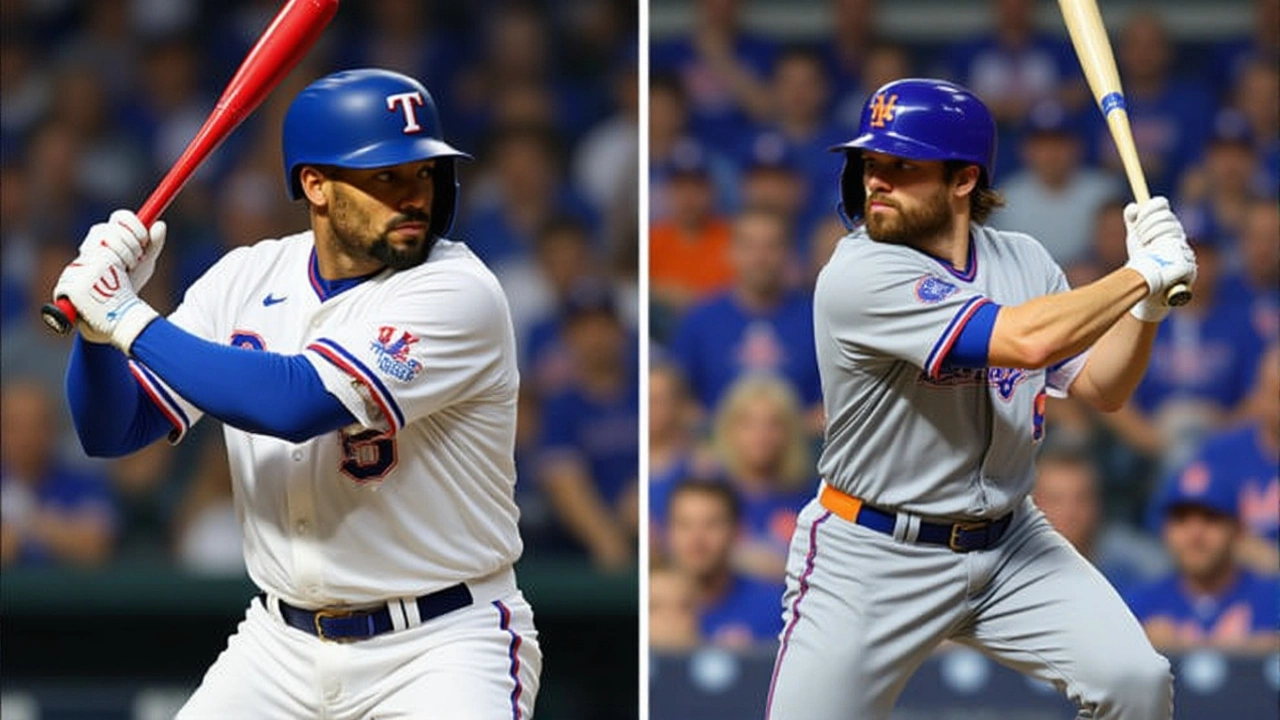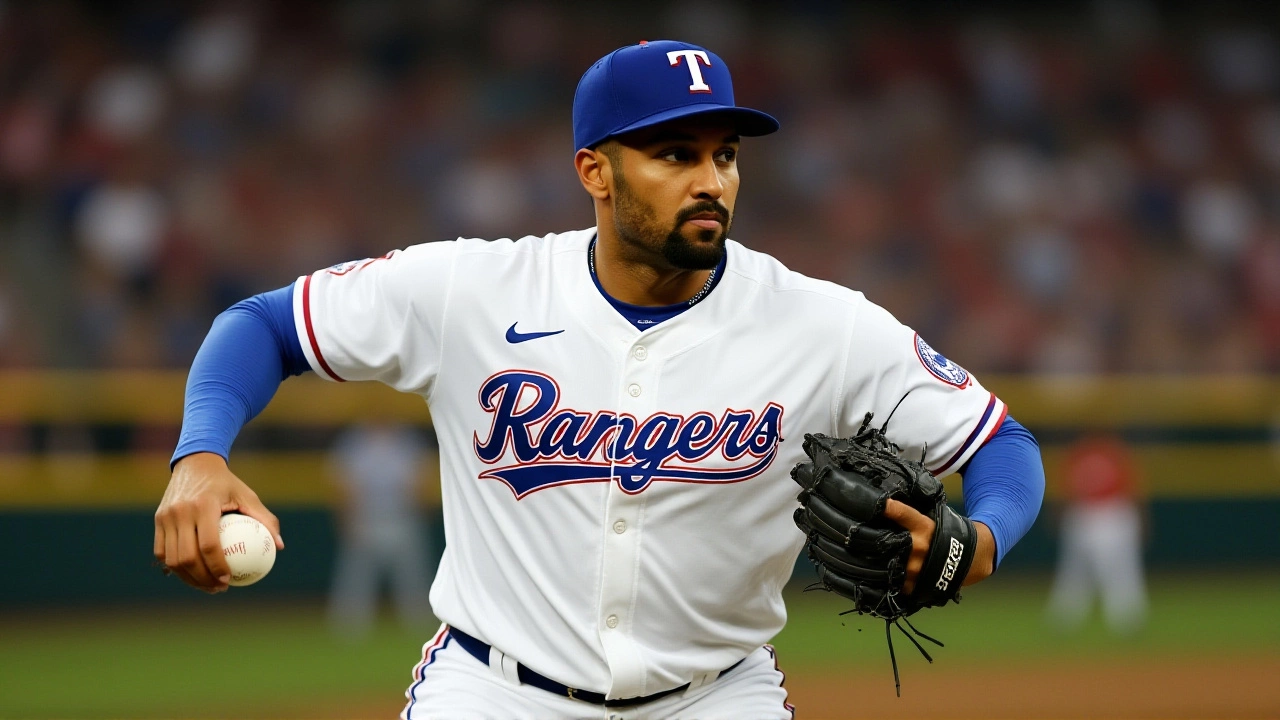Mets Trade Decade-Long Star Nimmo to Rangers for Semien in Shocking One-for-One Swap
 Nov, 24 2025
Nov, 24 2025
The New York Mets and Texas Rangers stunned baseball on Sunday night, November 23, 2025, by completing a rare one-for-one blockbuster trade that sent Brandon Nimmo, the face of the Mets’ outfield for a decade, to Arlington — and brought Marcus Semien, the aging but defensively elite second baseman, to Queens. The move, confirmed by MLB.com’s Anthony DiComo, didn’t just shake up two rosters; it shattered the emotional anchor of a generation of Mets fans who watched Nimmo grow from a first-round draft pick in 2011 to their most consistent offensive presence since 2016.
Why This Trade Wasn’t Just About Stats
At first glance, the numbers look lopsided. Nimmo, 32, delivered a 3.0 fWAR in 2025 with 25 home runs, 13 stolen bases, and a 114 wRC+, while Semien, 35, posted a 2.9 fWAR — but with a career-worst .305 on-base percentage and a .364 slugging percentage, the lowest of his 10-year career. Yet, the trade wasn’t about last season’s numbers. It was about alignment. The Rangers, who ranked among the bottom three teams in left-handed power in 2025, saw Nimmo as a solution: a switch-hitter with speed, patience at the plate, and a reputation for clutch hitting. For the Mets, Semien’s +7 Outs Above Average on defense was the deciding factor. After years of struggling with infield defense — especially at second base — they were willing to gamble on his glove, even as his bat faded."It’s not about what he did this year," said one Mets front office source, speaking anonymously. "It’s about what he’s done for a decade. He’s the guy you want behind the mound when the game’s on the line. We’re trading a hitter for a defender. That’s a philosophical shift."
The Contract Crunch
Both players are locked into massive deals. Nimmo’s eight-year, $162 million contract, signed in December 2022, still has five years remaining. Semien’s seven-year, $175 million pact, inked in December 2021, has four years left. Neither team had the luxury of simply letting these deals expire — they were financial anchors. The Mets, owned by billionaire Steven A. Cohen, are under pressure to show ROI. Acquiring Semien, who’s clearly declining offensively, invites scrutiny. Why spend $175 million on a player who hit just .221 with 12 home runs in 2025? The answer: defense. The Mets ranked 22nd in the majors in defensive efficiency last season. Semien’s ability to turn double plays and cover ground at second base could be the missing piece.Meanwhile, the Rangers, who finished 87-75 in 2025, were desperate for a leadoff hitter who could get on base and steal. Nimmo’s career .350 OBP and 13 steals in 2025 fit perfectly. But here’s the twist: Nimmo’s 2025 season wasn’t a straight line. He started the year hitting .230 with no power, then exploded in July — hitting .295 with 17 homers over his final 60 games. That late surge gave Texas confidence he’d rebound in a new environment.
Who’s Next for the Mets’ Infield?
The trade immediately triggered a cascade of questions about the Mets’ future infield. With Semien now the starter at second, what happens to Mark Vientos (25), Luisangel Acuna (22), and Ronny Mauricio (23)? All three are top-100 prospects with infield versatility. Vientos, a powerful right-handed hitter, has spent time at third and first. Acuna, a slick-fielding shortstop, is ready for the majors. Mauricio, once considered the organization’s best defensive infielder, has battled injuries. Now, with Semien on the roster, one of them — or even Brett Baty (25) — could be moved as a trade chip. MLB Trade Rumors suggests the Mets could target a center fielder like free agent Cody Bellinger to replace Nimmo, or push top prospect Jett Williams (21) into center if he’s ready."They didn’t trade Nimmo to go backward," said a scout familiar with the Mets’ plans. "They traded him because they believe Williams can be the next great center fielder — and they’re betting Semien’s glove makes up for his bat."
The Rangers’ New Look
For Texas, Nimmo’s arrival means a new leadoff hitter, a switch-hitter who can handle center field, and a player who knows how to win. The Rangers’ offense was anemic from the left side — only three teams in baseball hit fewer home runs from the left-handed batter’s box in 2025. Nimmo’s 25 homers last year, combined with his ability to draw walks and run, gives them a spark they’ve lacked since losing Corey Seager to injury. But now, they face their own puzzle: how does Semien’s presence affect Josh Jung (26) and Wyatt Langford (23)? Jung, a right-handed slugger, has played mostly third base. Langford, a dynamic outfielder, could be shifted to second if Semien’s bat continues to decline. The Rangers are betting Nimmo’s presence allows them to be patient with their young core.
An Era Ends in Queens
For Mets fans, this isn’t just a trade — it’s the end of an era. Nimmo was drafted by the Mets in 2011, debuted in 2016, and became the emotional heart of a franchise that had spent years rebuilding. He was the guy who stayed through the 100-loss seasons, the guy who hit the walk-off homer in 2022 that sent the Mets to the playoffs. His contract was seen as a statement of loyalty — and now, he’s gone. The Mets didn’t just lose a player; they lost a symbol."He gave us everything," said longtime fan Maria Delgado, 48, outside Citi Field. "He never complained. He never asked out. And now they traded him for a guy who’s past his prime. I don’t get it."
What’s Next?
The Mets will likely explore free-agent outfielders like Bellinger, Kyle Schwarber, or even a trade for Bryan Reynolds of the Pirates. Semien’s health and bat will be monitored closely — if he hits below .230 again in 2026, the Mets could face a $175 million mistake. Meanwhile, Texas will watch Nimmo’s adjustment to a new league and a new lineup. If he repeats his July-to-October surge, this trade could be remembered as a masterstroke. If not, it might go down as one of the most controversial moves of the 2025 offseason.Frequently Asked Questions
Why did the Mets trade a rising star like Nimmo for a declining player like Semien?
The Mets prioritized defense over offense. Semien’s +7 Outs Above Average in 2025 was elite for a second baseman, while the Mets ranked 22nd in defensive efficiency. They believe his glove can offset his offensive decline and create more double plays, which helps their pitching staff. Nimmo’s bat, while strong, was seen as replaceable with younger prospects like Jett Williams.
Is Marcus Semien’s contract a financial risk for the Mets?
Absolutely. Semien’s $175 million deal is one of the largest for a player with a .364 slugging percentage — the lowest of any qualified hitter in MLB in 2025. If his bat doesn’t improve, the Mets could be stuck with a $43 million annual liability for a below-average hitter. But if his defense remains elite and he gets hot in key moments, the risk could pay off.
What does this mean for Mets prospects like Vientos and Acuna?
With Semien now at second, Vientos, Acuna, and Mauricio are now in a logjam. One or more could be traded for pitching or outfield help. Vientos, a power hitter, might be moved to first base or traded if the Mets pursue a left-handed bat. Acuna, a top shortstop prospect, could be pushed to second long-term — or become the next trade chip.
Why did Nimmo agree to waive his no-trade clause?
Nimmo, who spent his entire 10-year career with the Mets, reportedly had no desire to leave — but he was offered a chance to join a contender with a clear path to the playoffs. The Rangers, coming off a 2023 World Series appearance, offered him a leadership role and a chance to play center field daily. He also likely received assurances about his role and a personal guarantee from the front office.
Is this trade a sign the Mets are tanking for 2026?
Not exactly. The Mets are still in win-now mode — they finished fourth in the NL in 2025. But they’re betting on their young core (Williams, Acuna, Vientos) to develop faster than expected. Trading Nimmo signals they’re accelerating their timeline, not abandoning it. They’re not rebuilding — they’re recalibrating.
What’s the long-term impact on the Rangers’ roster?
Nimmo gives Texas a true leadoff hitter and center fielder they’ve lacked since 2022. His ability to hit left-handed pitching and steal bases complements their right-handed power core (Jung, Langford). Semien’s presence may push Jung to third base permanently and open a path for Langford to become the everyday second baseman by 2027 — making this a two-year transition, not a one-off move.